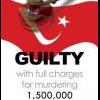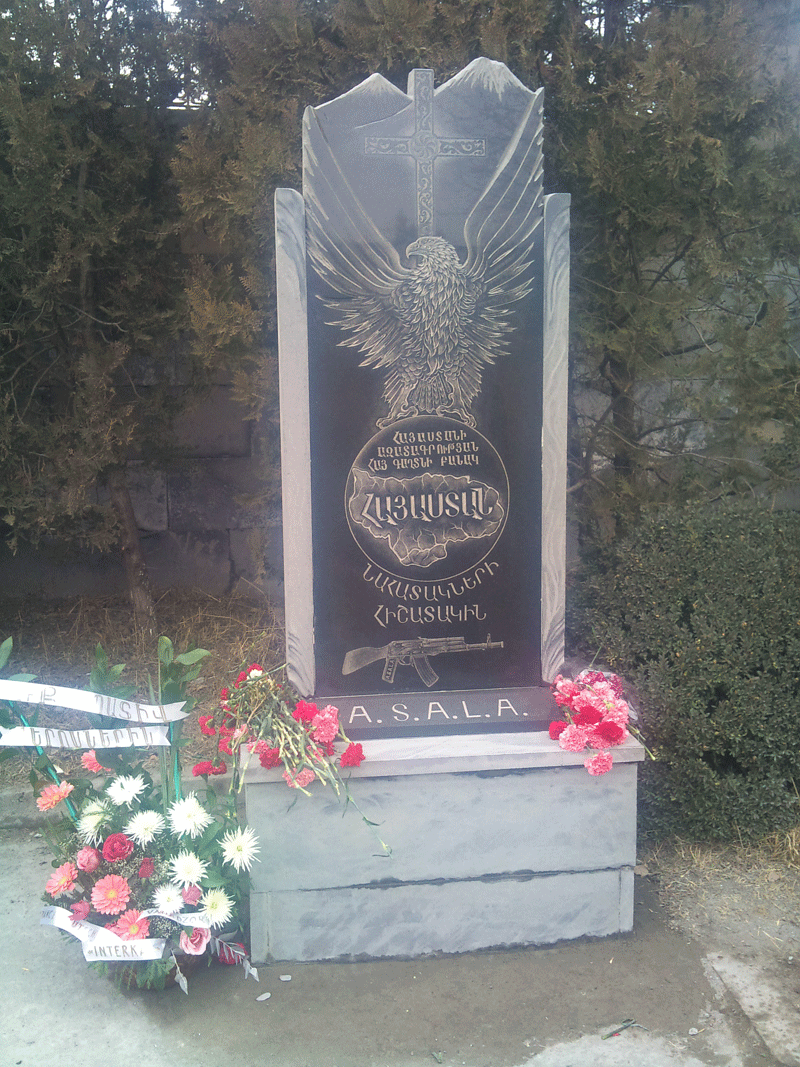Remembering Gourgen Yanikian: Genocide survivor and avenger
Remembering Gourgen Yanikian: Genocide survivor and avenger
December 26, 2013 - 15:46 AMT
PanARMENIAN.Net - December 24 (in some sources December 25 or 26)marked the 118th birth anniversary of Gourgen Yanikian, an Armenian American author, engineer and an Armenian Genocide survivor, best known for the assassination of two Turkish consular officials (Los Angeles Consul General Mehmet Baydar and Consul Bahadır Demir) in California in 1973.
Sentenced to life imprisonment, Yanikian was released on parole in January 1984.
Yanikian was born in Erzurum in 1895, at the height of the anti-Armenian massacres that had taken hold of the eastern provinces of the Ottoman Empire. His family was able to flee to a safer location, but when they returned to Erzurum eight years later to retrieve personal possessions they had hidden in a barn, his elder brother Hagop was killed by two Turkish men.
Yanikian was studying to be an engineer at the University of Moscow when World War I broke out. After learning of the Turkish persecution of Armenians during the genocide of 1915-23, he traveled to the Caucasus in the spring of 1915 and joined a volunteer regiment of the Russian Army to find out the fate of his family members, whom he had not heard from since the outbreak of the war and who were living in the Ottoman Empire. He was assigned to an engineering unit that was tasked with mapping out the geography of the terrain ahead of the regular troops.
Upon his arrival in Erzurum, he found his father's business in ruins and recognized the bodies of two of his relatives. In the genocide, he lost twenty-six members of his extended family.
Yanikian went on to complete his education in Russia and in 1930 moved to Iran together with his wife Suzanna.
He emigrated to the United States in 1946, where he published several novels including The Triumph of Judas Iscariot, (1950), Harem Cross (1953) and The Voice of an American (1960).
As his wife fell ill and expensive medical bills forced him into insolvency, he became despondent.
Memories of the genocide lingered in his mind and visions of his dead brother haunted him for years. Turkey's continual denial of the genocide remained a source of anguish and pain. Eventually, Yanikian, believing he had little left to live for, resolved to avenge the deaths of his family members and bring greater awareness to the genocide by organizing the assassination of the perpetrator country's agents, an act that took its cue from the example set by Soghomon Tehlirian fifty years earlier.
On January 27, 1973, the 77-year-old Yanikian lured the Turkish consul general Mehmet Baydar, 47, and vice-consul Bahadır Demir, 30, to a cottage at the Biltmore Hotel in Santa Barbara, promising to make a gift to the nation of Turkey of a bank note and a painting stolen from the palace of the Sultan of the Ottoman Empire more than a century earlier. Yanikian had contacted the consul general three months earlier, and insisted that the consul general personally accept the painting, and since Baydar did not drive, Demir was asked to accompany him to provide transportation. Baydar, married and the father of two daughters, was a career diplomat, who had previously served in Paris and Washington. Demir was on his first foreign assignment.
Yanikian handed them the bank note, for which he was given a receipt, and the three men began to converse over lunch. It was during this time that Yanikian revealed to them that he was not Iranian, as he had told the consulate when he first contacted them, but Armenian. Baydar dropped the bank note in anger and a heated exchange took place. It was at this point that Yanikian yelled "I will kill you," pulled a Luger pistol from a hollowed-out book and emptied nine rounds at them, hitting them in the shoulders and chest, though none of the wounds were lethal. As Baydar and Demir lay on the ground Yanikian pulled out a Browning pistol from a drawer and fired two rounds into the head of each man, "what he considered mercy shots." He phoned the front desk of the hotel from his room and requested that the sheriff be contacted, because "I have just killed two men."
Yanikian pleaded not guilty to two charges of first degree murder. Although over the course of the trial he openly conceded that he had caused the deaths of the men, he insisted that he was not guilty of any crime. Yanikian insisted that what he did was "destroy two evils," as the victims were "not human" for him.
It is believed that Yanikian's act set off the string of assassinations and targeted attacks against Turkish diplomats by ASALA and JCAG in the 1970s and 1980s.



















